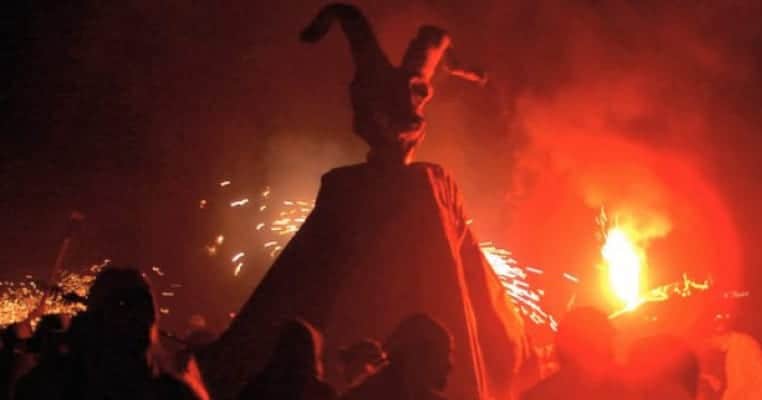Halloween is indeed an iconic holiday, instantly conjuring spooky visions of jack-o-lanterns, black cats, witches in flight and all of the other festive trappings of the holiday. What many Americans might not know is that numerous countries have their own macabre holidays in which the veil between the living and dead are drawn thin, and scary apparitions are likely to make an appearance. Some of these festivals, like Samhain, predate Halloween and even lent inspiration and imagery to our holiday. Others, like the Filipino All Saint’s Day, blend American Halloween into pre-existing traditional folklore due to long-term American military occupation.

1. Mexico – Día de Muertos
The best known macabre festival outside of the United States, to Americans, is likely Mexico’s Día de Muertos, or Day of the Dead. English speakers often refer to it as Día de Los Muertos, although this is an incorrect back-translation that adds an unnecessary article. The holiday initially was celebrated in the summer, but gradually moved to coincide with the period of Halloween and All Saint’s Day after Spanish colonization.
Día de Muertos is an amalgam of indigenous Mesoamerican traditions and Christian beliefs from the period of Spanish colonization. The original festival was believed to be dedicated to a goddess of the dead that was shared between Mesoamerican cultures. The modern practices attached to the holiday were not fully developed until the 20th century when it became standard practice to honor dead loved ones during the holiday.
Currently, the festival is celebrated over a three day period from October 31st to November 2nd. There is a wide variation in rituals from region to region and sometimes even from town to town. Some common elements include skull imagery, both in masks and shapes of food. Sugar or chocolate skulls are common gifts given to both the living and the dead, with beautiful altars called ofrendas built for the dead.

